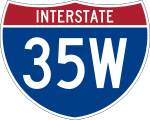Drawing the Wrong Lessons from the Minneapolis Bridge Collapse

As they did with Katrina, the politicians and public have taken it for granted that the Minneapolis bridge collapse illustrates the need for bigger government. In record speed, Governor Tim Pawlenty recanted his previous opposition to a gas tax increase for bridge and road repears. Few have even considered that the collapse might illustrate the dangers of relying too much, not too little, on governments for infrastructure.
One hundred and fifty years ago, the citizens of Nevada, who faced an even more daunting infrastructure crisis, came to a different conclusion. An example was the Placerville State Road, a government-maintained mountain artery on the section of the Overland Trail. It"was literally lined with brown-down stages, wagons, and carts, presenting every variety of aspect, from the general smash-up to the ordinary capsize. Wheels had taken rectangular cuts to the bottom, broken tongues projected from the mud; loads of dry goods and whiskey barrels lay wallowing in the general wreck of matter; stout beams cut from the roadside were scattered here and there, having served in vain efforts to extricate the wagons from the oozing mire."
Instead of assuming that these problems proved the need for more government, Nevada's politicians and voters turned to the private sector. They granted dozens of charters to companies and individuals to construct and maintain roads. Between the 1850s and 1880s, local entrepreneurs financed, built, and operated more than one hundred toll roads and bridges. This represented an enormous amount of activity in an area with so few people.
While some grumbled about paying tolls, even the sternest critics acknowledged that privatization brought dramatic improvements in quality. Referring to the Placerville Road, one observer commented that"a narrow, dangerous, wretched trail [which] was scarcely fit for the passage of sure-footed pack-mules" had been transformed into"a broad, compact, well-graded highway, which might be fairly be likened to an old Roman road."
For more on the rise and fall of Nevada's toll roads and bridges, see my article (co-authored with Linda Royster Beito), "Rival Road Builders: Private Toll Roads in Nevada, 1852-1880," Nevada Historical Society Quarterly 41 (Summer 1998), 71-91.